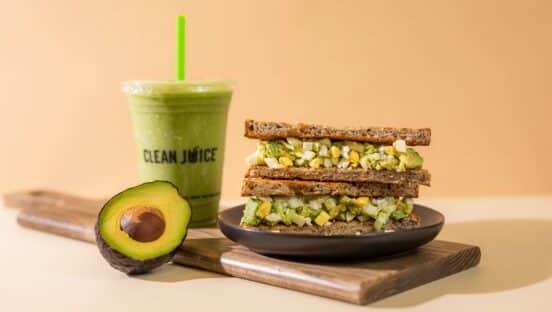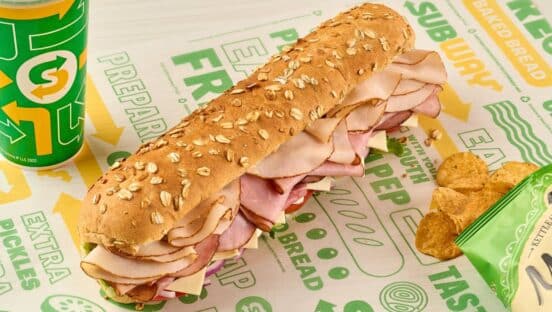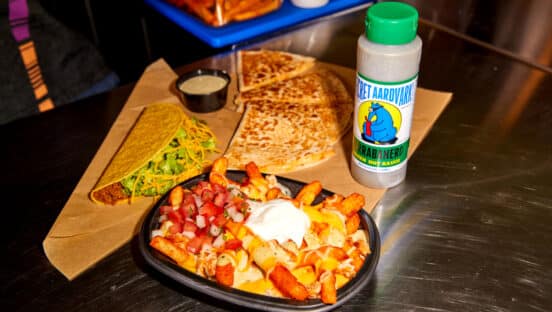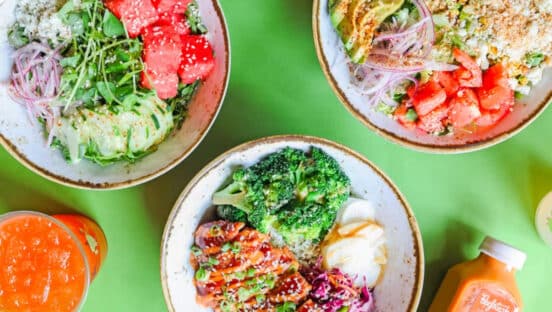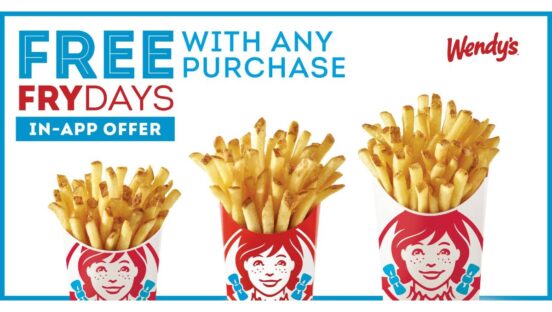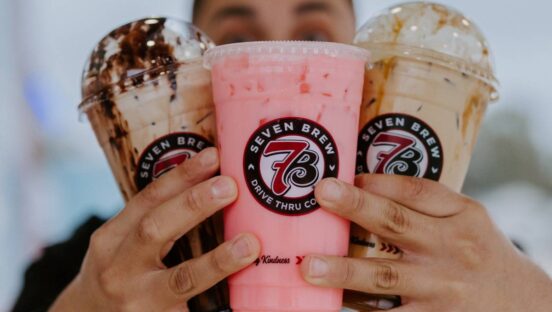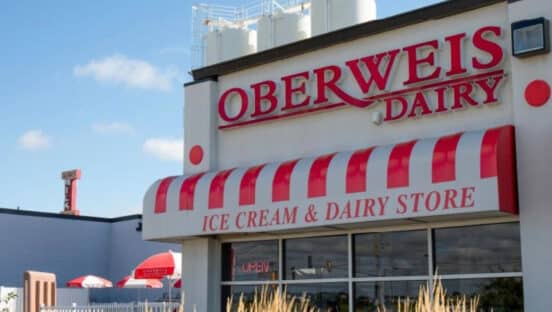Whenever you reflect on a year that just ended, it’s always worth asking whether those key trends will die or carry on. Arguably 2018 was best defined by four dynamics for restaurants: Delivery and technology in regards to off-premises (as one category), promotional activity and the increased ad spending that accompanied it, labor challenges, and one of the hottest M&A runs in any industry, at any time in recent memory.
BTIG analyst Peter Saleh wrote Friday morning that similar trends should unfold from a macro standpoint in 2019. But here are some major themes: The lessening of promotional activity amid labor issues. And the continued, but reduced, deal activity in the public restaurant space. While hard to rival last year’s run, restaurants remain red-hot targets for private-equity firms. The real estate play is extremely valuable and the price is right for some larger chains that have slid traffic due to overexpansion and competitive saturation. On the same token, it’s appealing to many public brands to head private and batten down the hatches, so to speak. Buffalo Wild Wings, in one example, was mired in what felt like a never-ending news cycle of often-ugly activist battles before its $2.9 billion deal to Arby’s (now Inspire Brands). Prior to sale, BWW reported a net earnings decrease of nearly 20 percent as same-store sales dropped 2.3 percent at corporate units and 3.2 percent at franchised ones. We haven’t heard much since, other than uplifting news of executive hires, ad campaigns, and an exciting restaurant prototype. Control the message.
Saleh wrote there are still opportunities for potential deals in 2019, with Jack in the Box and full-service burger chain Red Robin as “the most likely candidates in our universe.” Jack in the Box admitted recently it held potential talks with buyers. If dealt, Saleh estimated an acquisition price of $115 per share or 46 percent premium to its current price. However, assuming a 1 to 1.5 times multiple discount to Sonic’s recent deal (also to Inspire), given Jack in the Box’s sales issues, would generate a price tag of $100–$105 per share.
In Saleh’s predictions, two quick-service chain stood out as his top picks for 2019: Domino’s and Chipotle, although for very different reasons.
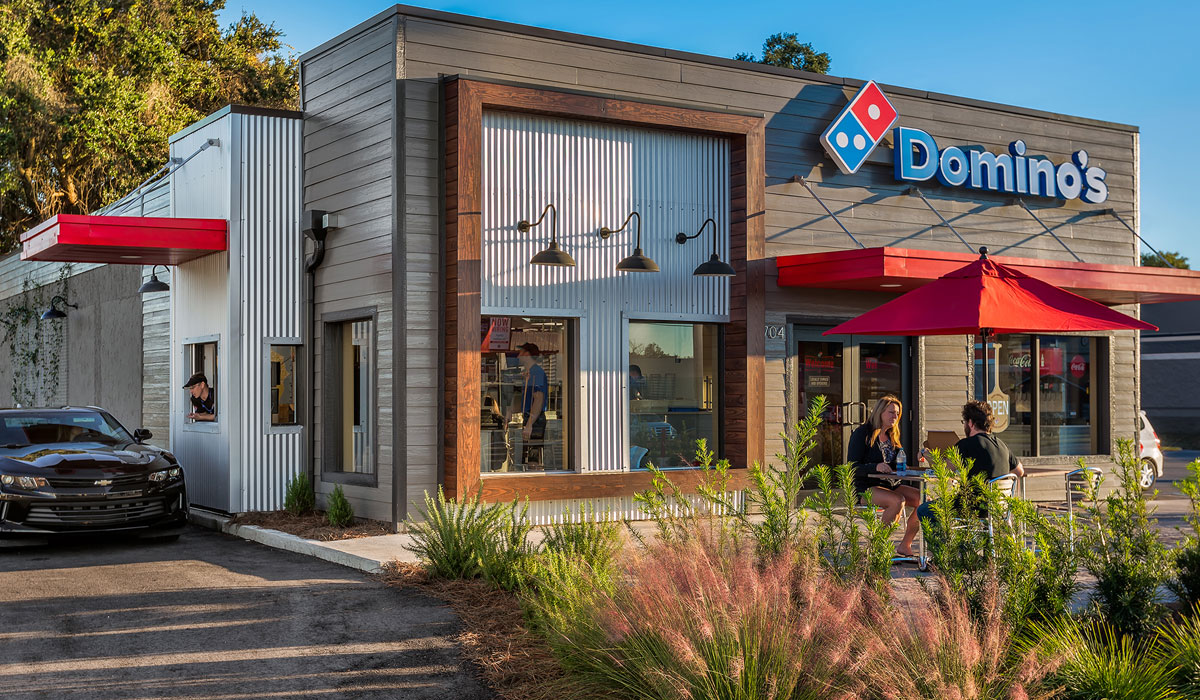
Let’s start with Domino’s
“Domino’s is a continuation, there isn’t much new but good secular stories can outperform for years and valuation has recently become compelling,” Saleh wrote.
Hard to believe, but December will mark a decade since Domino’s first introduced its $5.99 price point, “establishing compelling equity on value that should continue to drive sales for another year,” Saleh said.
Despite a stellar return last year, and in 2017, and 2016, and 2015 [we could go on], we see no reason the gains can’t continue as the formula of the company’s growth remains intact,” Saleh said.
Domino’s posted domestic same-store sales growth of 6.3 percent in the third quarter, marking the 30th consecutive quarter of positive comps growth. Internationally, same-store sales lifted 3.3 percent, making it a ridiculous 99 straight quarters of positive gains. The U.S. growth, though, represented the second straight quarter of decelerating gains. It was 7 percent in Q2 and 8 percent to start the fiscal calendar. Revenue of $785.97 million, up from last year’s $643.64 million Q3 figure, missed Wall Street’s estimate of $788.08 million at the time. Earnings per share came in at $1.95 and net income $84.10 million. The fact these type of results missed any sort of expert prediction should tell you all you need to know about Domino’s current standing in the marketplace.
The brand also opened 232 locations in Q3 over the 113 in Q2 and has added 920 delivery and takeout hubs year to-date (as of October) to bring its store count to 15,300. Since 2012, the company added 5,114 restaurants. CEO Ritch Allison noted that (again, as of October year-to-date) Domino’s closed just seven restaurants in the U.S., which is a pretty remarkable figure given there are more than 5,700 stateside units.
Returning to the compelling value topic, Domino’s $5.99 price point initially met customers as a two-medium, two-topping pizza offer. Since, it has expanded into the broader Mix & Match platform with the addition of pasta, sandwiches, chicken, desserts, and salads.
“This steady expansion of the menu and consistent price point as allowed Domino’s to establish its dominance on value,” Saleh wrote.
BTIG estimated that 20–25 percent of the $37 billion-plus domestic pizza category is comprised of value-seeking customers. That’s probably a safe bet. Added up this equates to $7.4–$9.3 billion in sales. Measured with Domino’s systemwide sales of roughly $6.6 billion, there is ample room for further gains, Saleh noted.
And if you’re looking at market share in one of the most intense quick-service segments in the land, Domino’s currently delivery dollar share—by its own shared numbers—is the highest it has been in at least eight years. In 2017, the company said it had 17 percent of the total quick-service pizza market share. Other major pizza chains accounted for 31 percent, and regional chains and independents made up 52 percent. In regards to pizza delivery market share, Domino’s held 29.3 percent. Major brands had 28 percent and regional chains/independents accounted for 43 percent.
Here’s a look at the delivery dollar share:
- 2011: 21.9 percent
- 2012: 22 percent
- 2013: 23 percent
- 2014: 24.4 percent
- 2015: 26.7 percent
- 2016: 27.2 percent
- 2017: 29.3 percent
Domino’s is set to host its annual Investor Day January 17 in Orlando. Saleh wrote they don’t expect any major surprises, just more details on Domino’s previously touted fortressing strategy that entails splitting markets and purposely cannibalizing stores to increase total sales and capture more carryout business. Saleh said carryout is a larger segment of the pizza category at $17 billion versus $10 billion for delivery, showing another runway for Domino’s to bolster its performance.
“We’re going to continue to be front footed,” Jeffrey Lawrence, Domino’s EVP and CFO, said in October. “We’re going to continue to try to make the right choices, but we’re not going to run off the clock … We are going to be aggressive and try to grow share.”
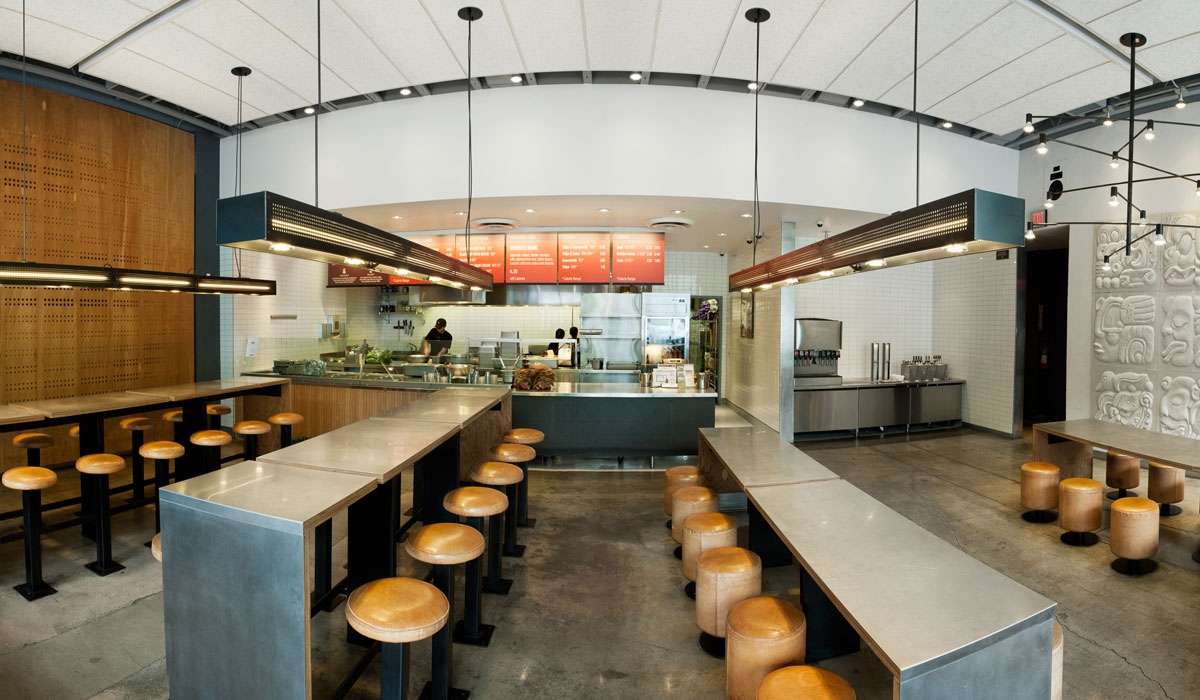
As for Chipotle …
“We believe Chipotle has multiple levers at its disposal in 2019 to drive both top- and bottom-line outperformance, including menu innovation, digital sales growth, loyalty, menu pricing and improving new unit economics,” Saleh wrote.
I think we’re starting to see—and 2019 will be the true manifestation of this—why the CEO job at Chipotle was such an intriguing one. Forgetting the 2,000-plus units and history of Chipotle’s past dominance, you could definitely say the chain was a rocky operation when former Taco Bell head Brian Niccol joined in March. The food-safety issues were still ever present and Chipotle’s marketing message was disjointed at times. Niccol called the brand “invisible” on multiple occasions.
What this all amounted to was, in cliché terms, the fact that Chipotle had good bones. But it needed a jolt of perspective and had to stop lagging industry innovation—whether that be on the menu or technology side.
Speaking of tech, Chipotle’s digital sales mix increased from mid-single digit to more than 11 percent in the past year, growing 48 percent in Q3 thanks to delivery and app upgrades, among other changes. “We continue to believe that digital sales growth will not only drive margins higher but will also unlock Chipotle’s ability to introduce new menu items to drive traffic,” Saleh wrote.
Chipotle’s second make-lines, which are fast flooding the system, require two to three employees versus the five to six typically needed, “suggesting notably higher margins,” Saleh said.
“In our view, the benefits of this launch include the potential for increased traffic, menu-mix and digital sales [higher margin], with limited downside if the products don’t resonate as they required no additional ingredients.” — Peter Saleh on Chipotle’s recent Lifestyle Bowls launch.
Saleh believes the combination of improved digital access and menu innovation is a powerful combo for Chipotle. Earlier this week, the chain announced four new digital menu exclusive Lifestyle Bowls, including Whole30 Salad Bowl, Paleo Salad Bowl, Keto Salad Bowl, and Double Protein Bowl.
“We believe the introduction of these bowls has low-risk but high-return potential as they cater to consumers’ prevalence for lifestyle/diet-oriented meals while utilizing existing ingredients already in the restaurant,” Saleh wrote.
Why was this a digital-only push? Could be a few reasons. One perhaps being that Chipotle wants to fuel that awareness Niccol has mentioned so often. Also, it speaks directly to a consumer segment that Chipotle is courting head-on: younger consumers, guests who maybe strayed during the food-safety downturn, and even those who weren’t looking to Chipotle day-to-day and have no loyalty from its previous rise.
Saleh said it carries additional promise as well. “… the online only strategy limits throughput risk as digital orders are typically placed well in advance of pick up. In addition to the potential traffic benefit from new product news, these bowls are assembled in a way [including guacamole, double protein] that generates a modestly higher price than traditional items which could drive menu-mix,” he wrote. “In our view, the benefits of this launch include the potential for increased traffic, menu-mix and digital sales [higher margin], with limited downside if the products don’t resonate as they required no additional ingredients.”
Here’s another example of how Chipotle can be in line for a near-term boost: Loyalty. While you could definitely criticize Chipotle’s past efforts—or lack thereof—in this realm, it’s worth leaving behind past history for the time being. If anything, the absence of a successful program previously presents whitespace you don’t often seen at this lifestage of a chain with such clout—a notion that’s exciting for investors.
Saleh said, similar to Panera Bread, Chipotle could see 200 basis points of transaction growth following the national launch of its rewards program. Chipotle has been testing the platform in Phoenix, Kansas City, and Columbus, Ohio since early November. The new Chipotle Rewards platform can be signed up from the app or website. Guests who enroll earn 10 points for every $1 spent, with 1,250 points resulting in a free entrée. It also includes a hyper-personalized CRM program running behind the scenes, which Chipotle said allows for targeted communication to drive trial, menu exploration, and brand affinity.
“Chipotle Rewards is a critical part of our efforts to digitize and modernize the restaurant experience. Through this program, we can show some love to Chipotle super fans, create a true one-on-one relationship with our customers and unlock new opportunities to engage through offers and discounts—from delighting customers on their birthdays to incentivizing incremental purchases to providing rewards for engaging with the brand’s mission to cultivate a better world,” Curt Garner, chief digital and information officer at Chipotle, said in September.
It’s a far cry from Chipotle’s last effort—Chiptopia—a three-tiered offering that launched in July 2016 and famously cost the company millions.
Saleh said, over the past couple of weeks, they’ve noticed the ability to join the new program in several other cities, “indicating it has expanded beyond the original test markets in a very short period of time.”
Using Panera as a comparison, the bakery brand gathered some 4.5 million users and generated 200 basis points of traffic growth from loyalty within a year of launching its MyPanera program in 2010.
Some other comps: Dunkin’s DD perks, introduced in 2014, has 9 million members and represents 12 percent of transactions. Panera’s, up to 28 million members, accounts for 52 percent. Starbucks, at 15 million members, is around 40 percent and members spend 20–70 percent more after joining.

Less can be more
Is Chipotle going to take additional menu pricing in 2019? This is something we looked at thoroughly recently. Saleh expects Chipotle to enter the year with roughly 2.5–3 percent of modest price increase taken in the fall. BTIG surveys indicated that Chipotle took a 2.5 percent increase on entrée items late in 2018 (this didn’t affect side items or drinks) and ranged between 1.8–4.8 percent, with more markets at the lower end. There’s a lot going on here compared to competitors, both in the Mexican segment and fast casual in general. Click the link above to dive into the differences and what it could mean for 2019.
A boost in unit-level economics
Saleh said Chipotle’s unit-level economics have steadily improved in recent years bolstered by higher new unit sales volumes and margins, “providing the foundation for continued unit growth.”
He estimated that restaurants built over the past year are averaging $1.795 million in sales per restaurant, up 15 percent from Q3 and closure to volumes seen in 2014/2015 before the food-safety crisis. (As a whole system, Chipotle posted AUVs of $1.9 million in 2017). Given the higher sales volumes and margins and reduced build costs over the past several years ($735,000 versus $843,00 in 2014), Saleh said Chipotle’s new unit cash-on-cash returns have improved to close to 40 percent from the low 20 percent range. “These returns would place Chipotle closer to the industry-leading returns they were historically able to generate and suggest the concept still has ample room for new unit development. We believe these economics and continued improvement in new unit volumes could support an acceleration in new unit development beginning in 2020,” he wrote.
In June, Chipotle announced it would close 55–60 restaurants. Chipotle opened 28 new restaurants in Q3.
“Our new restaurants this year have opened at stronger levels, and we continue to emphasize high-quality, high-returning new restaurants as we build out the pipeline,” John Hartung, Chipotle’s CFO, said in the October call. “As a result of these strong unit economics, combined with a healthy pipeline for next year’s openings, we expect to open between 140 to 155 new restaurants in 2019.


